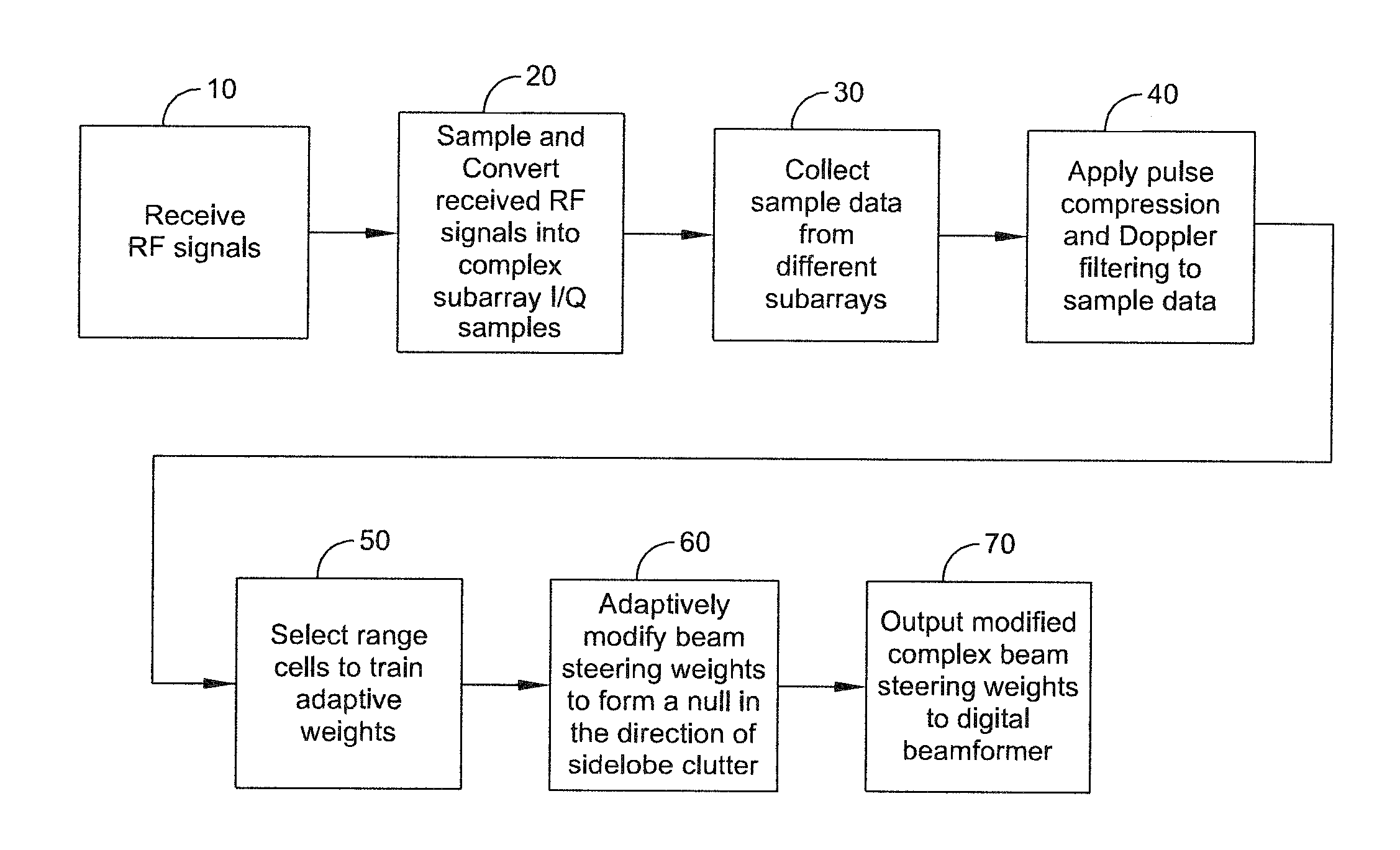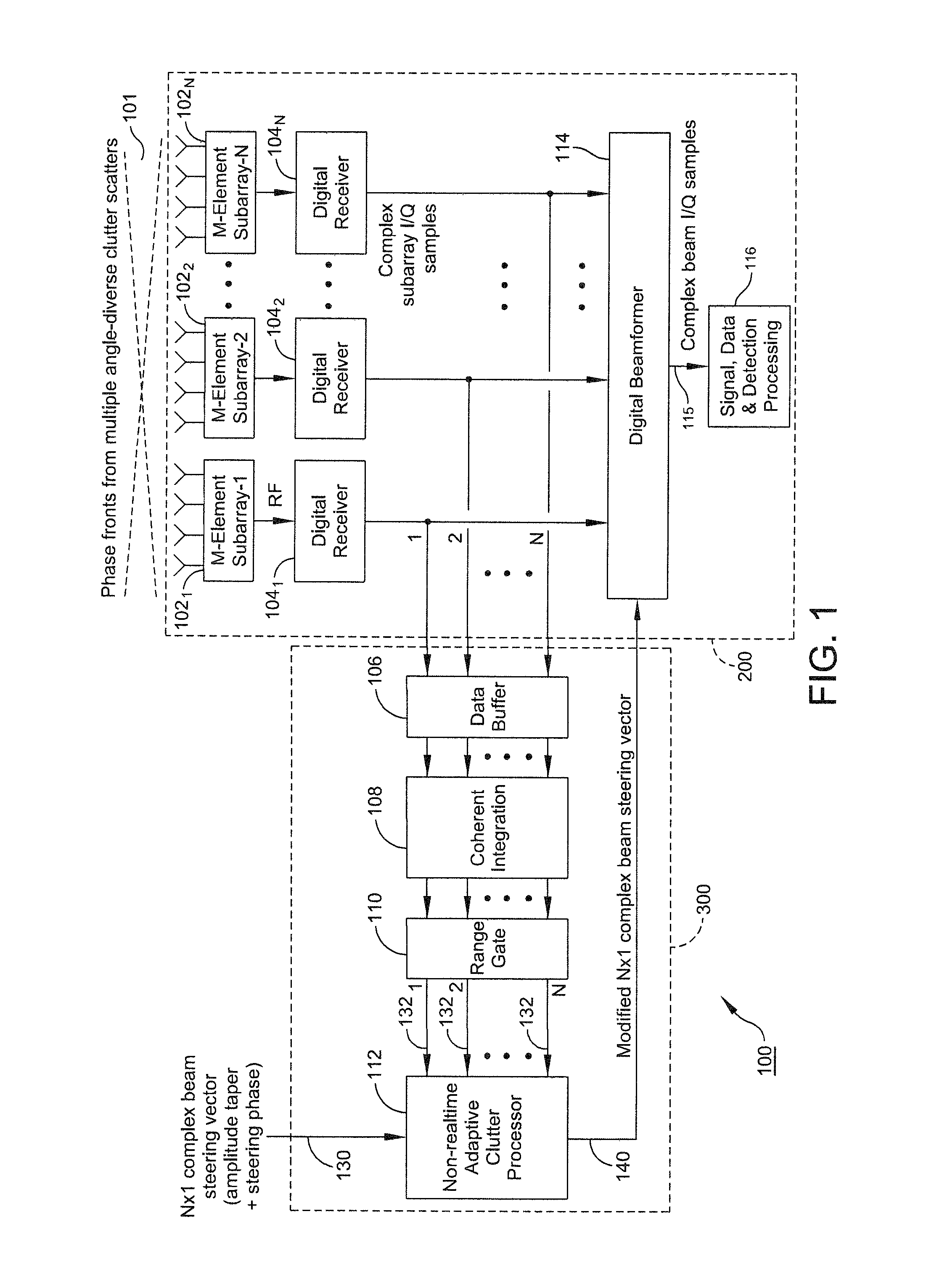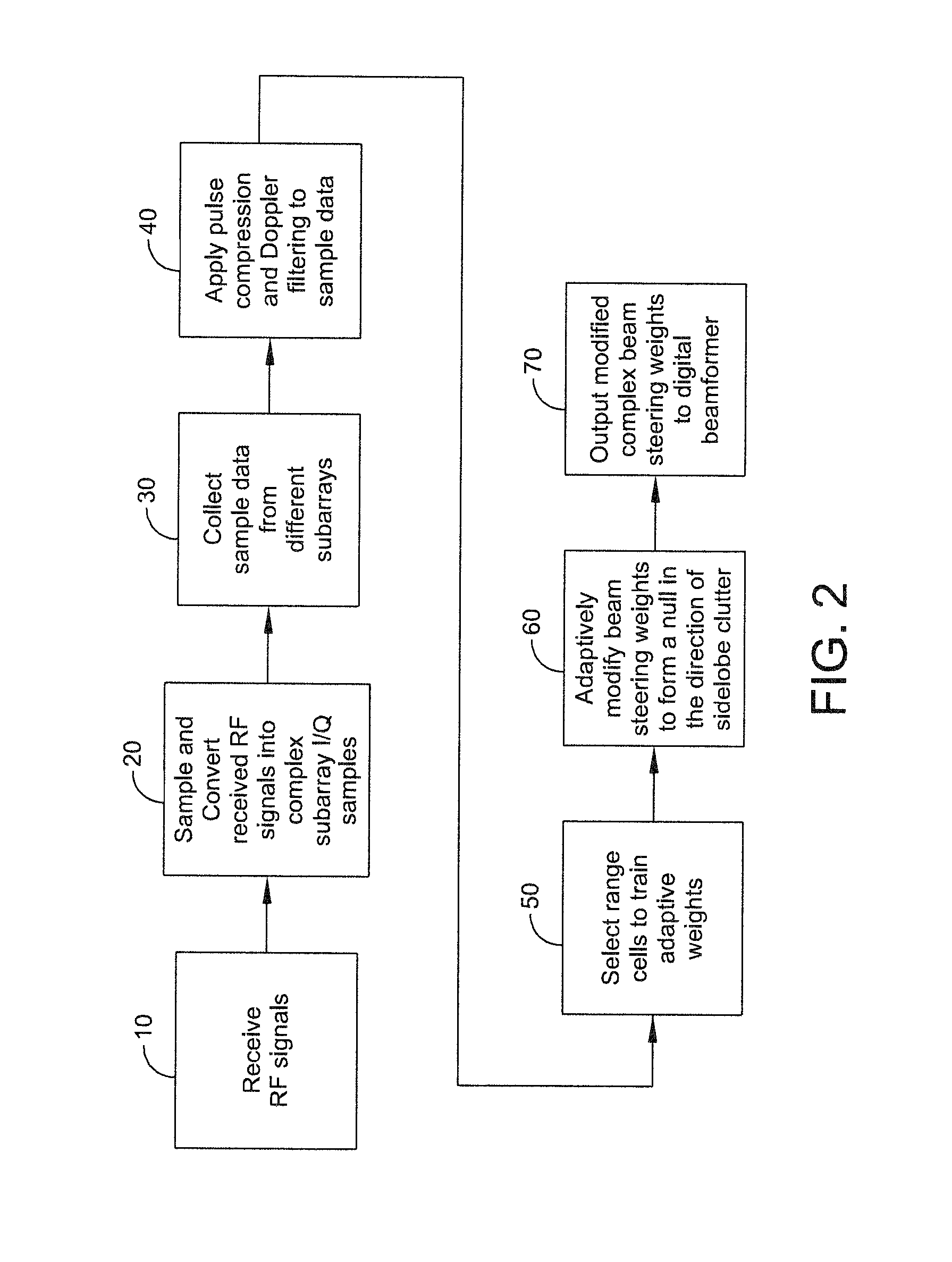Method and system for adaptively cancelling clutter from the sidelobes of a ground-based radar
a radar and sidelobe technology, applied in the field of digital beamforming radar systems, can solve the problems of introducing velocity blind and dim speeds, introducing potentially significant signal loss in doppler domain processing, undesirable traits and characteristics in the system that limit their utility, etc., to achieve the effect of reducing the net integrated sidelobe clutter-to-noise ratio, reducing sidelobe gain, and enhancing clutter-to-noise ratio
- Summary
- Abstract
- Description
- Claims
- Application Information
AI Technical Summary
Benefits of technology
Problems solved by technology
Method used
Image
Examples
Embodiment Construction
[0011]It is to be understood that the figures and descriptions of the present invention have been simplified to illustrate elements that are relevant for a clear understanding of the present invention, while omitting, for purposes of clarity, other elements found in typical radar systems and methods. Because such elements are well known in the art, and because they do not facilitate a better understanding of the present invention, a discussion of such elements is not provided herein.
[0012]The present disclosure teaches a method of providing to a beamformer a modified complex beam steering vector that includes the steps of collecting subarray I / Q (inphase / quadrature phase) samples from a plurality of subarrays receiving clutter, performing coherent integration of the subarray I / Q samples to increase the clutter-to-noise ratio, adaptively modifying a complex beam steering vector to form a null in the direction of the received clutter, and outputting to a beamformer the modified comple...
PUM
 Login to View More
Login to View More Abstract
Description
Claims
Application Information
 Login to View More
Login to View More - R&D
- Intellectual Property
- Life Sciences
- Materials
- Tech Scout
- Unparalleled Data Quality
- Higher Quality Content
- 60% Fewer Hallucinations
Browse by: Latest US Patents, China's latest patents, Technical Efficacy Thesaurus, Application Domain, Technology Topic, Popular Technical Reports.
© 2025 PatSnap. All rights reserved.Legal|Privacy policy|Modern Slavery Act Transparency Statement|Sitemap|About US| Contact US: help@patsnap.com



